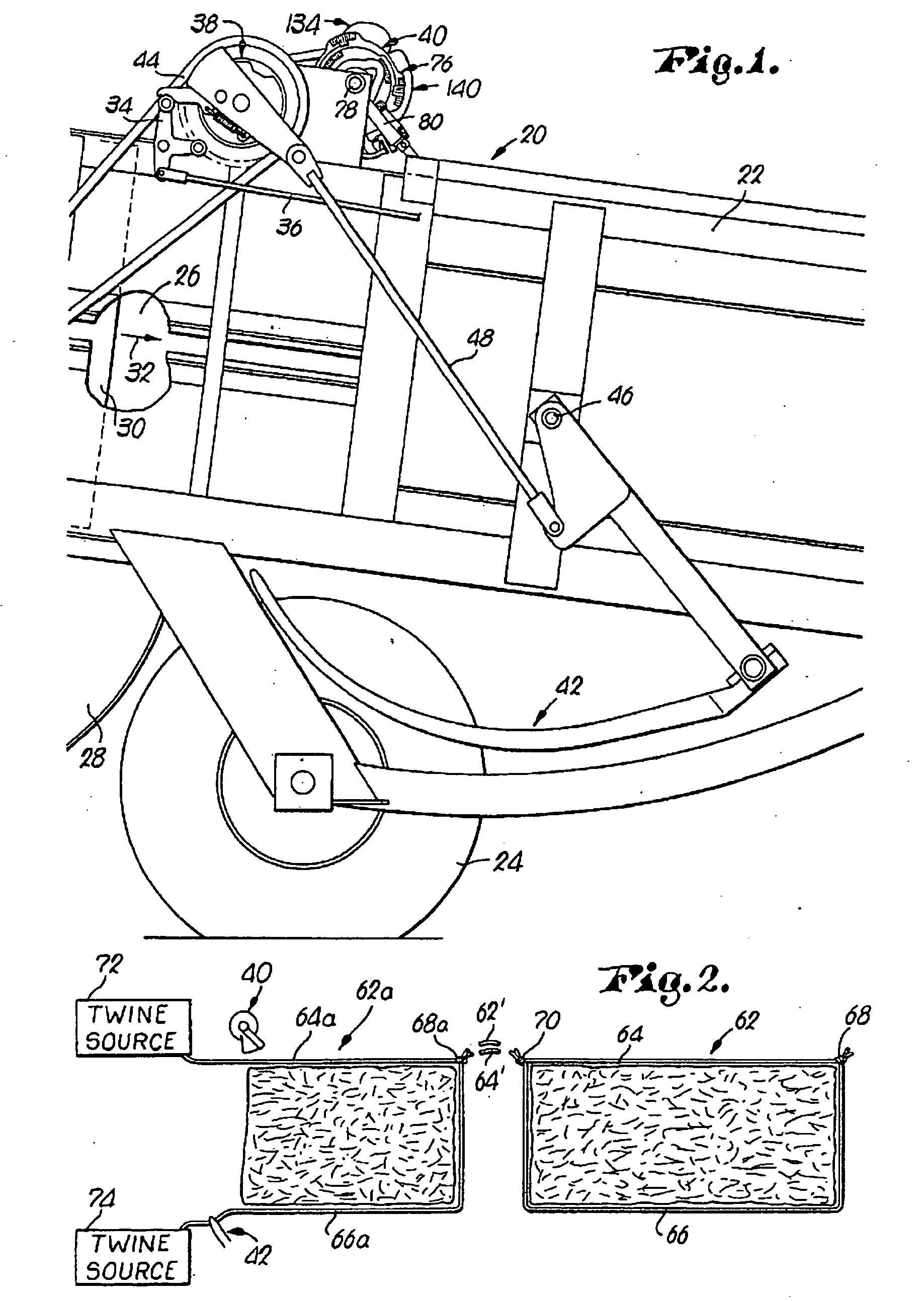Knotter for a Baler
- Summary
- Abstract
- Description
- Claims
- Application Information
AI Technical Summary
Benefits of technology
Problems solved by technology
Method used
Image
Examples
Embodiment Construction
[0023]In the description which follows and in certain passages already set forth, the principles of the present invention will be described in terms of “twine” and “knots” formed in such twine. However, it is to be recognized that such principles extend to wire and twisted junctions of wire as well as twine and knots. The claims should be interpreted accordingly.
[0024]The baler 20 illustrated in FIG. 1 has a rectangular bale case 22 that happens to be supported for over-the-ground travel by one or more ground wheels 24. The bale case 22 defines a bale chamber 26 that happens to be loaded through a curved duct 28 approaching the case 22 from the bottom thereof. A plunger 30 reciprocates within the bale case 22 to intermittently pack fresh charges of material from the duct 28 rearwardly in the chamber 26 in the direction of the arrow 32. When the bale reaches a predetermined size, a trigger 34 is pulled by a rod 36 connected to a suitable bale length sensor (not shown) to engage a dog...
PUM
 Login to View More
Login to View More Abstract
Description
Claims
Application Information
 Login to View More
Login to View More - R&D
- Intellectual Property
- Life Sciences
- Materials
- Tech Scout
- Unparalleled Data Quality
- Higher Quality Content
- 60% Fewer Hallucinations
Browse by: Latest US Patents, China's latest patents, Technical Efficacy Thesaurus, Application Domain, Technology Topic, Popular Technical Reports.
© 2025 PatSnap. All rights reserved.Legal|Privacy policy|Modern Slavery Act Transparency Statement|Sitemap|About US| Contact US: help@patsnap.com



